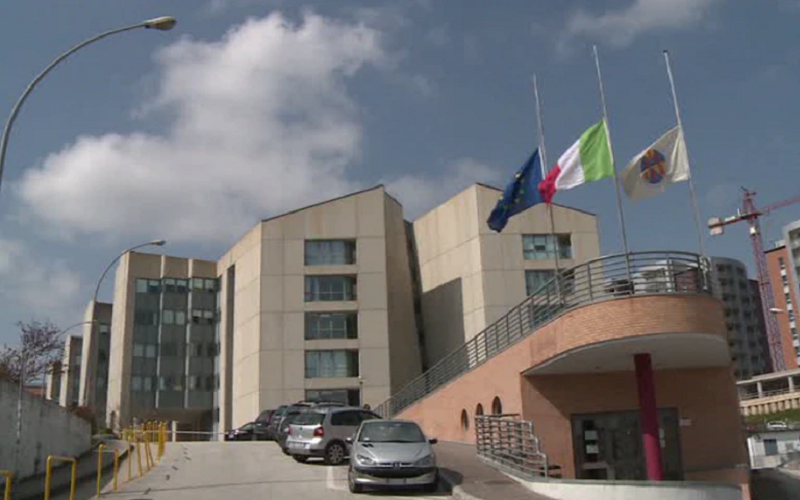
Aleksandra Rolewicz
Year II of the Doctoral School
Discipline: mechanical engineering
On 05.04.2025. – 19.04.2025 I had a research internship at the University of Molise (Università degli Studi del Molise) also known as UNIMOL. It is an Italian public university headquartered in Campobasso, Italy, founded in 1982 under Law No. 590 in accordance with the plan for the development and creation of new universities; all campuses of this university are located in the Molise region and are: Campobasso (headquarters), Pesche and Termoli. The main objective of the trip was the rheological analysis of mousses with the addition of powder from the skins and seeds of grapes, tomatoes and avocados.
During my stay, I conducted a series of rheological tests on the prepared mousses. The results of the tests confirmed the assumptions about the effect of additives on the properties of the products.
I dedicated every free weekend to sightseeing.
Termoli
Termoli is a town and municipality in Italy, in the Molise region, on the southern Adriatic coast, in the province of Campobasso. With a population of about 32,000, it grew rapidly after World War II and is a local resort known for its beaches and old fortifications. It was once known only as a fishing port, but in the new millennium it has become a favorite resort of Italian families. Termoli is home to the only port in the Molise region.
Castello Svevo
Castello Svevo, or Swabian Castle, is one of the city’s most recognizable symbols. Its construction began in the 11th century with the idea of protecting it from attacks from the sea. Although the main threat was supposed to be the Turks, unexpectedly the castle was quickly damaged by an attack from the Venetian fleet. Consequently, by the 12th century the structure had already been rebuilt and expanded.
The castle is distinguished by its austere, simple architecture – no ornamentation or decorative details can be found here. It consists of four small corner towers and a tall central tower, which now serves as a weather station. From the castle there are defensive walls that once surrounded the entire city, forming part of an extensive system of fortifications. There were also additional watchtowers at various points around the city – one of which, Torretta Belvedere, still survives today and serves as the entrance to Termoli’s historic center.
From April 3 to 18, 2025, the ancient chambers of the Swabian Castle in Termoli presented the works of Fredy Luciani – a tireless, visionary artist with deep ties to this Adriatic city. The exhibition, which attracted a lot of interest, is a tribute to the beauty of the sea, the power of nature and an imagination that reaches to the limits of the cosmos.
Amid the waves, sunsets, planets and themes of social engagement, Fredy Luciani‘s timeless work returns to once again illuminate the heart of Termoli – with the light of art, reflection and dreams.
Termoli Cathedral
Another notable monument in Termoli is the Romanesque Cattedrale di Santa Maria della Purificazione e San Basso. Situated on the highest point of the promontory, it is the centerpiece of the town’s historic center. Although the exact date of its construction remains unknown, it is believed to have been built between the 10th and 12th centuries.
The interior of the temple conceals the relics of Termoli’s patron saints, St. Bassa and St. Timothy (San Timoteo), whose remains are interred here. The cathedral, with its austere Romanesque architecture and spiritual value, is not only an important place of worship, but also one of the most valuable testimonies of the city’s medieval history.
Antique trabucco
When visiting the city, look out for the historic Trabucco di Celestino, located at the foot of the historic center. It is a traditional wooden structure built on stilts, once used to catch fish without the need to take a boat out to sea.
Trabucco is a unique example of ancient fishing engineering and an important part of the local heritage, which still impresses today with its form and picturesque location on the Adriatic Sea.
The research stay in Campobasso was an important stage in my development both academically and personally. It enabled me to acquire advanced competence in food rheology and intensify my research collaboration with the University of Molise. In addition, the experience deepened my knowledge of Italian culture, which was facilitated by participation in numerous integration events and direct exposure to local customs.

Visit report (.pdf)
University of Life Sciences in Lublin
13 Akademicka Street, 20-950 Lublin
VATIN 712 010 37 75
REGON no. 000001896
ePUAP: /UP-Lublin/SkrytkaESP

